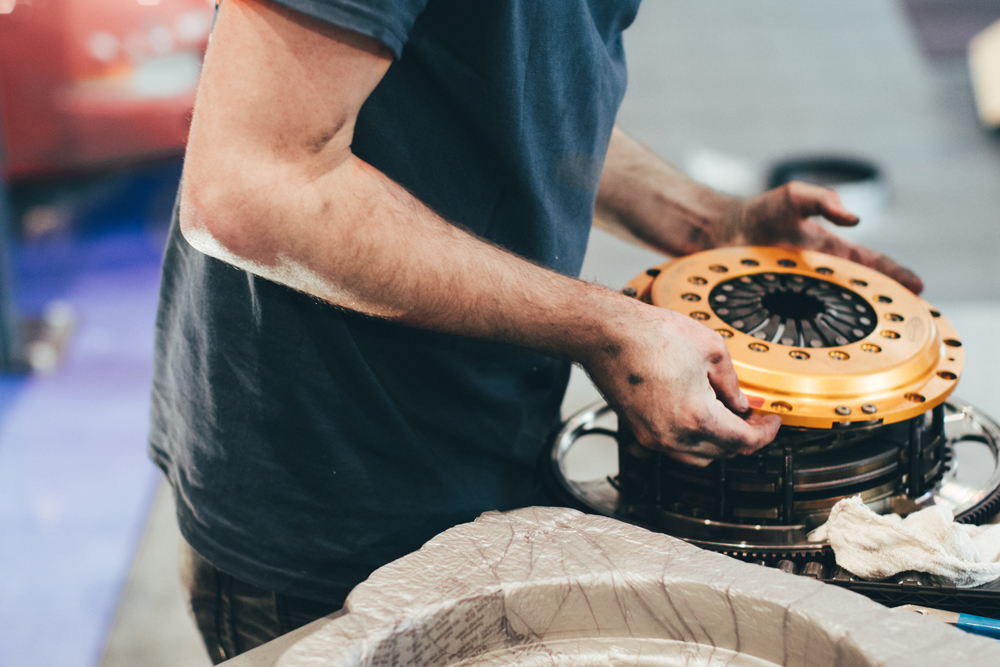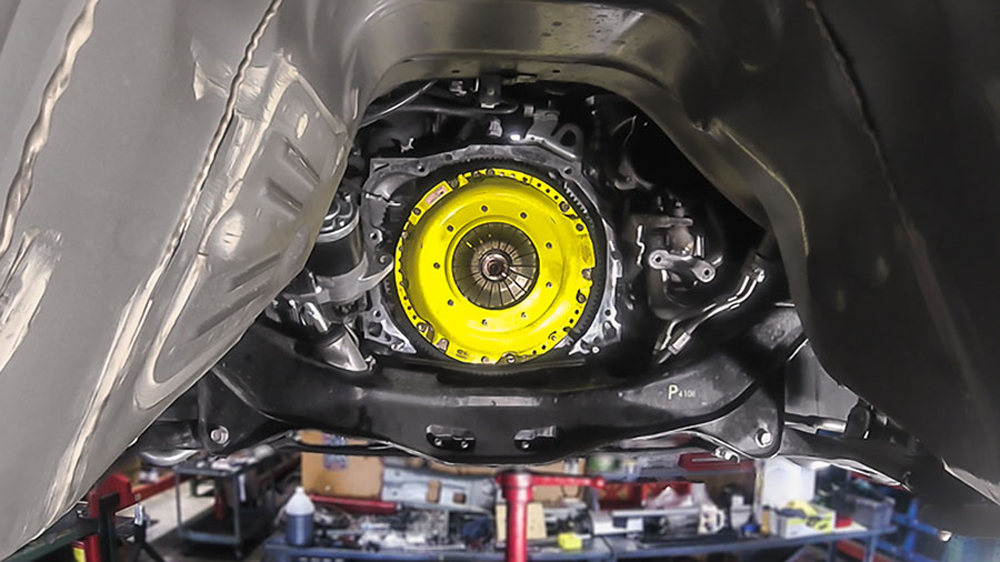Ask the Experts: How To Choose The Correct Racing Clutch

The considerations extend well beyond cost and power output in motorsports applications.
While it is effectively a consumable, a clutch that’s properly matched to a given platform and use-case is crucial to both the durability and drivability of a race car. Yet as noted by KC Polk of Prescott, Arizona-based Centerforce, it’s far from a “one size fits all” proposition.
“Flywheel weight, friction materials, clamping force, and a number of other factors come into play with a racing application,” Polk said. “In much the same way that camshafts, cylinder heads, and other components need to be matched to the engine combination, so do the clutch and flywheel.”
With the number of variables involved in clutch selection, it can be difficult to zero in on which option makes the most sense for a particular vehicle and racing discipline. This often leads to racers over-buying or under-buying, and either can result in frustration.
Deciding Factors
“Clutches tend to be very application-specific, so it’s easy to make mistakes,” said Christopher Bernal of Advanced Clutch Technology (ACT), Lancaster, California. “If someone is coming from a different form of racing, or even moving from one class to another, sometimes carrying the same equipment with you isn’t the best option, and you need to make a change. But it can be easy to over-spend here: If you’re going up in power, you might think that you need to upgrade to a triple-disc clutch, when in reality you might only need a single-disc. On the other end of the spectrum, under-spending and getting less than you need could end up costing you more because you’ll have to replace the clutch more often.”
Bernal also noted that although there are some good rules of thumb for clutch selection, there’s one variable that really has to be evaluated on a case-by-case basis. “Driving style plays a big role in this,” he said. “In fact, in some forms of racing it might be the most important variable to consider.” Still, there are some other considerations that ultimately take precedence over technique and driving habits.

“First, it has to fit,” he pointed out. “That can be a limiting factor in some series. We’ve seen well-known racers go from one form of racing to another and call us for the same clutch they’ve been using, but we discover along the way that they’re using a different gearbox setup, and the clutch they’re used to just won’t fit. You have to look at diameter, along with total stack height. You also have to consider where the splines are on the input shaft, and whether or not it has a spacer in between the engine and the transmission. There’s a lot to take into account. Just because it will bolt up to the crankshaft doesn’t mean a particular clutch is going to work in that application.”
The next factor to consider is the engine’s output. “We are specifically interested in torque output at the crank here,” explained Polk. “When we are talking about clutches, we are not really concerned with the horsepower number. The twisting that is happening is what makes the clutch slip, and slippage creates heat.”
How the clutch is going to be used is also a hugely important consideration.
“Just because a clutch is rated to handle a certain amount of torque doesn’t mean it’s designed to put up with a type of use,” Bernal told us. “A drag racer is looking for consistent launching, and that consistency has a lot to do with clutch material selection. But in a road race car, you’re not worried about launch consistency, it’s more about quick shifting. Meanwhile, a drifter is going to be more concerned with thermal capacity because of how the clutch is being used in that discipline. Even if you’re using similar engines in all of those cars, you’d want different types of clutches in each.”
Bernal explained that thermal capacity is dictated in part by the mass of the clutch. Much like a brake disc, the clutch also serves as a heat sink, so the more mass it has, the more capacity it has to absorb thermal energy.
“If you’re going to have a lot of slipping going on, like you often see in drifting, you can’t have a lightweight clutch because it’s going to overheat very quickly,” Bernal said.

“You also have to consider the type of materials used in the clutch. Some friction materials will handle heat and slippage without seeing degradation as quickly as others. A sintered iron material, for example, is going to handle thermal energy better than a stock-style clutch that uses organic fibers. But it’s also going to be heavier.” He cited cerametallic material as landing somewhere in between those two, while carbon materials like siliconized carbon and carbon ceramic materials are both light and capable of handling high levels of heat, but their high cost currently relegates their use mainly to top-tier disciplines like Formula 1.
Polk also noted that material choice can affect drivability. “Organic materials tend to be more streetable. The downside with organics is that they start to lose frictional stability around 500 degrees Fahrenheit, at which point your torque capacity starts to diminish. That’s where rapid wear starts.”
He pointed out that in some situations, a multi-disc design can offer a solution with minimal compromise in both regards. “With a twin-disc you now have four friction surfaces to work with rather than the two you’d have with a single-disc clutch.” This additional surface area inherently creates greater thermal energy capacity, which can in turn allow for a less aggressive clutch material in some use-cases. But as is typically the case, minimizing compromise doesn’t come cheap.
“Cost is usually the main reason why folks don’t use a multi-disc clutch in applications where they have the option of using a single-disc or multi-disc clutch,” said Bernal. “But if a driver isn’t hard on the equipment, using twin-disc instead of a single-disc might end up saving them money in the long run because they might be able to make it last several seasons. There are a lot of variables involved, and the driver is a big one.”
SOURCES
Advanced Clutch Technology
advancedclutch.com
Centerforce
centerforce.com
 MEMBERSHIP LOGIN
MEMBERSHIP LOGIN JOIN PRI
JOIN PRI


